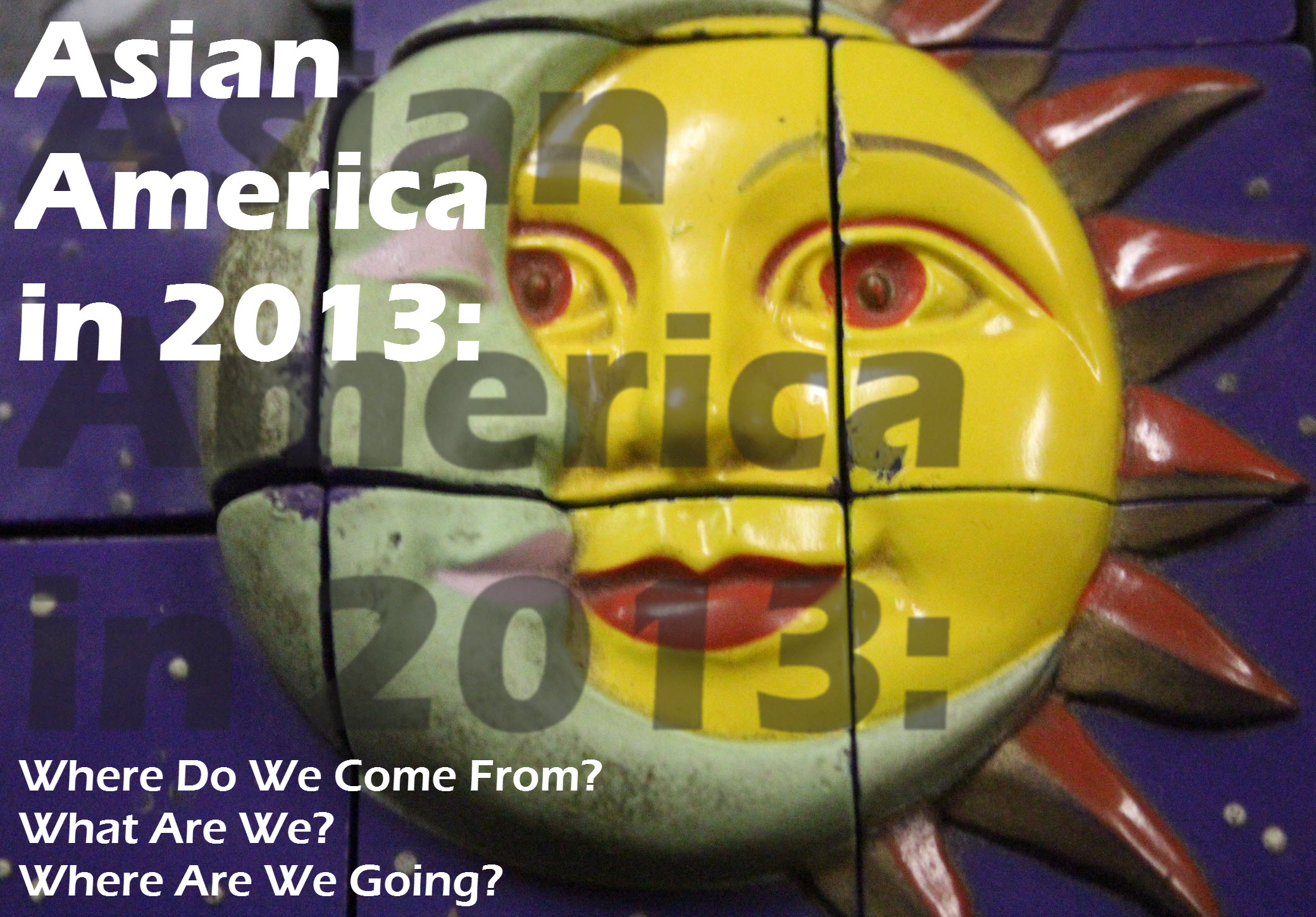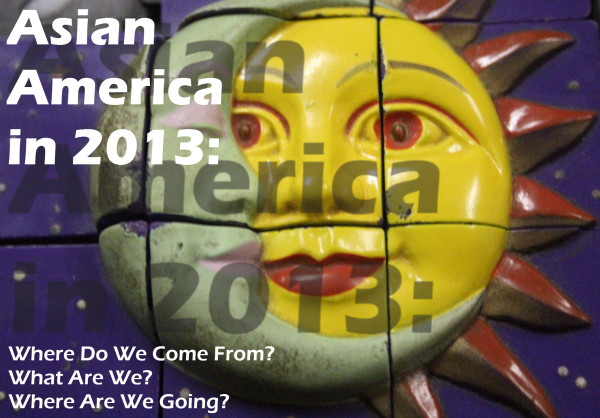[pullquote]Many cultural identities are not discernible from appearance. Because all of us belong to many different groups, choosing generalizations linked to one apparent identity as a basis for relating is presumptuous. We know that cultural influences are variously salient in different situations and that the influences themselves shift and change over time. ― Michelle LeBaron, Bridging Cultural Conflicts[/pullquote]
There is a necessity to bind Asian America by ideals and a tangible goal worth pursuing rather than strictly by race. For one, Asian America is diverse, not in terms of race and the many cultural groups people are descended from, but within America itself. Much of what is written about Asian America is centered around California, as many of the loudest voices come from Southern California, especially with a huge concentration of the population in California. This does not give a good sampling, for the culture of Asian-Americans living in the Midwest and various East Coast states is notably different, if my times living in Indiana, New York, Massachusetts, and Rhode Island are any indicators. Revision: And often, the popular voice is not the best representative of the experiences of many Asian-Americans.
To recall what is distinctly a product of Asian America’s culture, it is difficult to name three things for most people, so I will identify three from my own experiences: fortune cookies, Bruce Lee’s Jeet Kune Do martial arts style (and Hawaii’s Kajukenbo), and taiko drumming.
For fortune cookies, there are claims from both Japanese-Americans and Chinese-Americans as to who invented them, but the end result is that it became American, if not Americana, and remain popularly associated with Chinese-Americans.
Both Jeet Kune Do and Kajukenbo came from an amalgamation of multiple martial arts styles that became distinctly their own, functioning as both a philosophy and series of techniques–very much along the lines of what makes the fusion of cultures in America not bits and pieces from everywhere, but as America’s own distinct brand and identity.
Lastly, taiko, upon its introduction to America by Seiichi Tanaka in 1968, transformed in America due to its use with Western ensemble-style arrangement as opposed to the traditional uses, which in turn led to something that is truly a magical piece of culture transformed by the American cultural landscape into something wonderful, and popular too with TAIKOPROJECT appearing in mainstream films and commercials. My days with the collegiate teams Yukai, Kyodo, Asayake, and with Tanaka himself in the San Francisco Taiko Dojo are all what revealed to me that there is indeed hope and something distinct about Asian America, that is not lost while the popular voice is focused on discrimination and representation, rather than giving attention to what we create through transformation in America.
[pullquote]Nationalism of one kind or another was the cause of most of the genocide of the twentieth century. Flags are bits of colored cloth that governments use first to shrink-wrap people’s minds and then as ceremonial shrouds to bury the dead. ― Arundhati Roy, War Talk[/pullquote]
Thus, I look to Asian America through the lens of an outsider with admiration for what potential there is through its art, from culinary to martial to musical and performance styles. Art imitates life, and likewise, life imitates art. One does not need to be Asian or Asian-American to enjoy the cultural legacy gifted to the world by Asian America; there are people around the world I have met and trained with in JKD and Kajukenbo, and there are people who look to America more than Japan for their love of taiko, and dream of going to America to play taiko “the fun way” instead of the traditional way.
So when I look for something to bind Asian America together, transcending the cultural barriers that people create based off of their ethnic heritage, it’s art that unites us, and art that, popular or not, is a cathartic explosion which transcends the conventions of “brown and yellow”, “Oriental and Occidental”, and “Chinese, Filipino, and Indian” separatist, categorizing, and judgmental dichotomies that limit rather than expand our understanding. By focusing on divisiveness instead of inclusiveness, on being noticed rather than creating, we are eroding our sense of community, which, due to the large grouping of people from India through China and the Philippines and even to the Pacific Islands, is already fragile due to the heritages that are all distinguishably and characteristically different from each other.
[pullquote]It is not because the truth is too difficult to see that we make mistakes. It may even lie on the surface; but we make mistakes because the easiest and most comfortable course for us is to seek insight where it accords with our emotions — especially selfish ones. ― Aleksandr Solzhenitsyn, Peace and Violence[/pullquote]
Therefore, what we create and have from our American-ness is something we as Asian-Americans can claim as “ours” while at the same time being able to share it and allow “others” to enjoy, take, and recreate as well, like Kajukenbo: derived from various Asian martial arts styles, combined in America, transformed, then exported all around the world as something distinctly American. And at the same time, it is also distinctly Asian American, for though it is Asian in origin, it is just as American as well because it would not have transformed had it not been for the chance meeting of minds and cultures in America, as well as the prevalence of American and western ideas, norms, and art that influenced its creation, transformation, and evolution.
Likewise, taiko in North America has become something that gives reverse influence to the culture that it originated from: the western ensemble style has led to interest in American style taiko in Japan, and led to various American teams performing in Taiwan, Japan, and other places, notably TAIKOPROJECT.
It is thus this cultural mixing that leads to world that is changing from encounters, interaction, and transformation. So visibility and positive representation as people speaking with the popular voice call for is a sign of impatience, perhaps some ignorance even, rather than a sign of racism from the outside. Revolutions can be loud and violent, but are often met with swift and bloody suppression; but rebellion is subtle and changes over time, which is what art has done, to capture the moment and live beyond us, whether it is Vincent Van Gogh who only ever sold a single painting in his life, or Ai WeiWei, whose fame and notoriety are as much a result of his art as they are their own separate entity. So make good art, for art is what makes life something greater than simply existing, and as Andy Warhol says, “Don’t think about making art, just get it done. Let everyone else decide if it’s good or bad, whether they love it or hate it. While they are deciding, make even more art.”
End of Part 3
- Previous: Asian America in 2013: Where Do We Come From? What Are We? Where Are We Going? Part 1: Sensus Communis
- Previous: Asian America in 2013: Where Do We Come From? What Are We? Where Are We Going? Part 2: The Red King Syndrome
- Coming up tomorrow: Asian America in 2013: Where Do We Come From? What Are We? Where Are We Going? Part 4: Cosmos, Chronos, and Telos
Contributors: Johnny C and Jocelyn “Joz” Wang.
Photograph by Johnny C. Layout and graphic design by Jocelyn “Joz” Wang.








